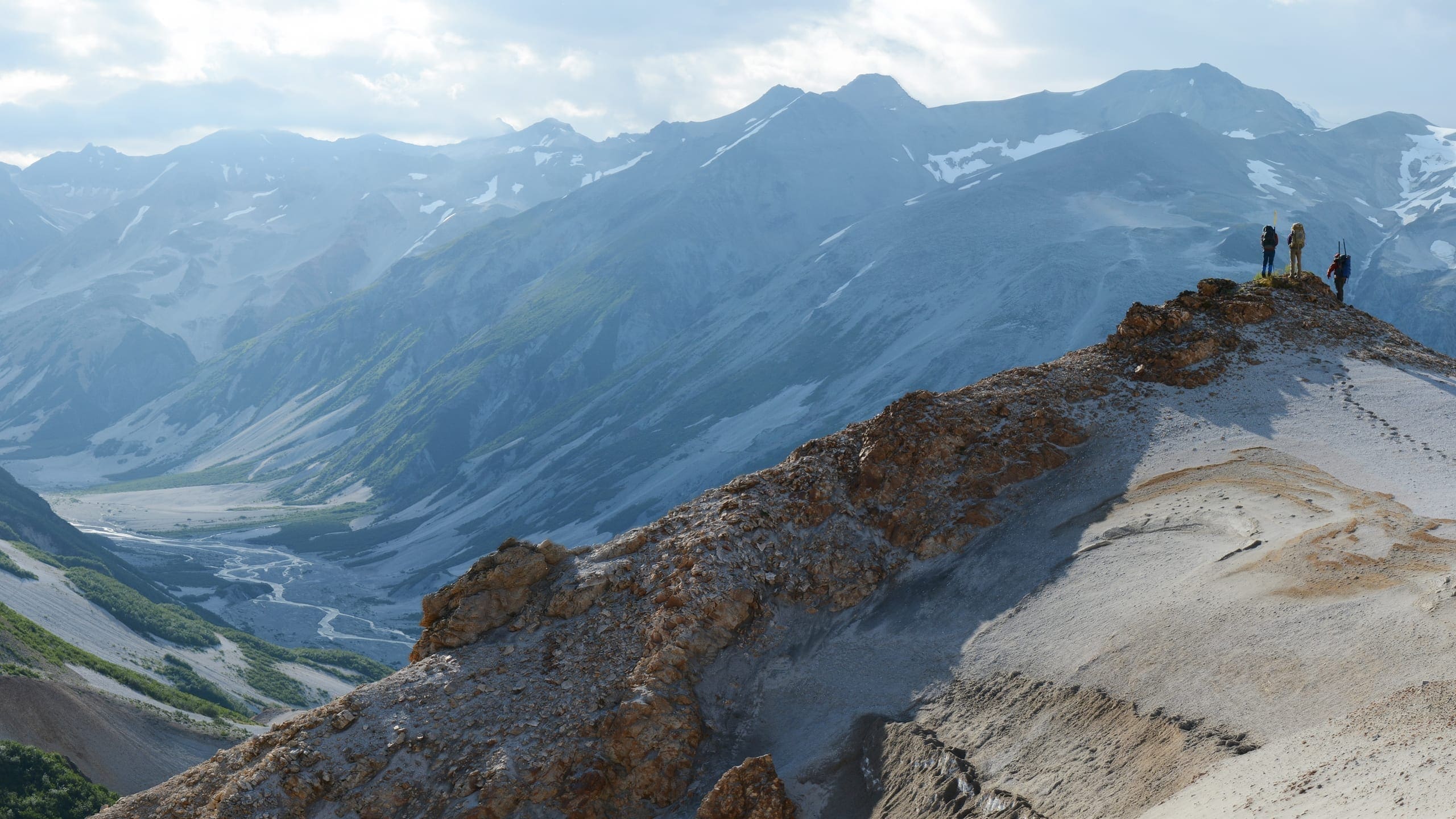About Katmai National Park & Preserve
Katmai National Park and Preserve was established as a National Monument in 1918 by a Presidential proclamation to preserve the Valley of Ten Thousand Smokes and the landscape associated with the cataclysmic volcanic eruption of 1912. It was expanded over the years by four additional proclamations, then enlarged and re-designated a National Park and Preserve by the Alaska National Interest Lands Conservation Act (ANILCA) in 1980 to protect habitats for, and populations of, fish and wildlife, including, but not limited to, high concentrations of brown/grizzly bears and their denning areas; to maintain unimpaired the water habitat for significant salmon populations; and to protect scenic, geological, cultural, and recreational features.
Katmai’s rugged landscape is representative of the northern portion of the Alaska Peninsula. It contains two physiographic provinces—the Aleutian Range and the Nushagak-Bristol Bay Lowlands. These two provinces contain a diverse mosaic of natural features and ecosystems. Katmai’s landscape contains vast multi–lake watersheds with hundreds of miles of wild, untamed rivers and streams. It’s an outdoor laboratory for studying the effects of volcanism, climate change, and other large scale landscape processes. This is also place with a 9,000 year record of human adaptation to environmental and ecological change.
Katmai National Park and Preserve spans over four million acres of remote, wild, and spectacular country. In Katmai you’ll find the Valley of Ten Thousand Smokes and the site of the world’s largest volcanic eruption of the 20th century. Katmai hosts an incredible density of brown bears, offering visitors an unprecedented opportunity to study and view bears in their natural habitat. Inside its boundaries are important spawning and rearing ground for Bristol Bay sockeye salmon, which help sustain one of the largest and economically important salmon runs in the world.
When most people envision Katmai, they think of bears. Katmai is one of the premier brown bear viewing areas in the world. About 2,200 brown bears are estimated to inhabit the park, and more bears than people are estimated to live on the Alaska Peninsula. As many bear populations around the world decline, Katmai provides some of the few remaining unaltered habitats for these amazing creatures. At Katmai, scientists are able to study bears in their natural habitat, visitors are able to enjoy unparalleled viewing opportunities, and the bears are able to continue their life cycle largely undisturbed. At Brooks Camp, brown bears congregate to feed on sockeye salmon in the Brooks River. Three wildlife viewing platforms along the river offer safe and spectacular wildlife viewing opportunities while minimizing our potential impact on the bears.
Katmai National Park and Preserve is located on the Alaska Peninsula, across the Shelikof Strait from Kodiak Island. Park Headquarters is in King Salmon, about 290 air miles southwest of Anchorage. Brooks Camp, approximately 30 air miles from King Salmon, is a common destination for visitors to the park and can only be reached via small float plane or boat because there are no highway connections with any sizable population centers.
Source: Foundation Document Overview – Katmai National Park
Katmai was established in 1918 to protect the volcanically devastated region surrounding Novarupta and the Valley of Ten Thousand Smokes. Today, Katmai National Park and Preserve also protects 9,000 years of human history and important habitat for salmon and thousands of brown bears. | Katmai National Park & Preserve | Alaska | https://www.nps.gov/katm/index.htm
Fast Facts:
| Date the Park was Established: | December 2, 1980 |
| Park Area (as of 2019): | 3,674,529.33 acres (14,870.3 km2) |
| Recreational Visitors (2018 Total): | 37,818 visitors |


